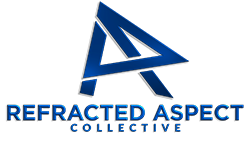
In many archery businesses, leadership teams find themselves entrenched in day-to-day tasks that could be delegated. This situation often persists not because of a lack of capability elsewhere, but due to deeper operational and strategic reasons that create a costly tension within the organization.
- Recognizing the Operational Tension in Leadership Task Ownership
- A Common Scenario: The Stalled Inventory Management Decision
- How Task Ownership Issues Create Cross-Functional Friction
- Why This Issue Persists: The Embedded Control Habit
- The First Meaningful Shift: Redefining Control as Strategic Oversight
- The Most Common Friction Point: Fear of Losing Visibility
- How This Issue Manifests in Daily Operations
- Frequently Asked Questions
- Reframing Leadership Capacity in Archery Businesses
- Taking the Next Step with Refracted Aspect
Recognizing the Operational Tension in Leadership Task Ownership
Leaders in archery businesses frequently carry responsibilities that extend beyond strategic oversight into operational details better suited for other roles. This overlap creates a bottleneck that slows decision-making and reduces the capacity for growth. The tension arises because these businesses operate under tight regulatory frameworks, fluctuating market demands, and competitive pressures that demand agility. When leadership remains tied to tasks others could own, it limits their ability to respond effectively to these external forces.
This tension is not just about workload; it’s about the clarity of cost. Every hour a leader spends on tasks that could be delegated is an hour lost from focusing on strategic priorities that drive the business forward. The consequence is a subtle but persistent drag on performance that can go unnoticed until it manifests as missed opportunities or operational inefficiencies.
A Common Scenario: The Stalled Inventory Management Decision
Consider a mid-sized archery retailer facing recurring delays in inventory management decisions. The leadership team still personally reviews stock levels and approves orders, despite having capable operations staff. This creates a bottleneck where procurement cycles slow down, and the business misses timely restocking windows.
The leadership’s involvement stems from a desire to maintain control and ensure accuracy, but the result is a stalled process that frustrates the operations team and risks stockouts during peak seasons. This scenario captures the operational tension clearly: leadership is caught between control and delegation, with the cost being slower response times and increased pressure on internal teams.
How Task Ownership Issues Create Cross-Functional Friction
When leadership holds onto tasks that could be delegated, it disrupts workflows across departments. For example, the sales team may experience delays in product availability because procurement decisions are held up at the leadership level. This misalignment creates frustration and erodes trust between departments.
Similarly, marketing efforts can suffer when campaign approvals or budget decisions require leadership’s direct input on routine matters. This slows down execution and reduces the team’s ability to capitalize on market trends. The ripple effect extends to customer service, where delayed product updates or inventory inaccuracies lead to repeated client complaints.
These inefficiencies compound quietly, creating a drag on the business that leadership may not fully recognize. The problem is not isolated; it fractures the operational rhythm and undermines the potential for coordinated growth.
Why This Issue Persists: The Embedded Control Habit
The primary reason leadership continues to hold onto tasks is an embedded habit of control. In archery businesses, where product quality and customer experience are paramount, leaders often feel compelled to personally oversee critical details. This habit becomes a structural flaw when it prevents delegation and creates unnecessary bottlenecks.
Even capable teams are sidelined because leadership doubts whether others can meet the standards or fears losing visibility into key processes. This mindset embeds itself into daily operations, making it difficult to shift responsibility without a deliberate change in approach.
Recognizing this habit as the root cause reframes the problem. It’s not about capability or resources; it’s about the leadership mindset that equates control with responsibility, even when it hinders overall performance.
The First Meaningful Shift: Redefining Control as Strategic Oversight
The initial step toward resolving this issue is a mindset shift from control to strategic oversight. Leaders must begin to distinguish between tasks that require their direct input and those that can be owned by others without compromising quality or accountability.
This shift doesn’t require a full restructuring or additional resources. Instead, it involves identifying one or two routine tasks currently handled by leadership and assigning clear ownership to trusted team members. The focus is on creating accountability frameworks that allow leaders to monitor outcomes without managing every detail.
This adjustment frees leadership capacity and begins to untangle the operational bottlenecks, setting the stage for more effective delegation and decision-making.
The Most Common Friction Point: Fear of Losing Visibility
When archery businesses attempt to delegate tasks, the most persistent barrier is the fear of losing visibility into critical processes. This fear manifests as micro-management tendencies, frequent check-ins, and reluctance to fully empower others.
Operationally, this creates delays as team members wait for approvals or second-guess their decisions. Leadership feels pressured to stay involved, which distorts priorities and stalls progress. The result is a cycle where delegation is attempted but never fully realized, maintaining the status quo of inefficiency.
How This Issue Manifests in Daily Operations
In the daily reality of archery businesses, this problem shows up as repeated friction in routine conversations. Leaders might hear phrases like, “We’ll handle that later,” or “I’ll just do it myself to save time.” These comments reflect a pattern of corner-cutting and deferred delegation that signals deeper dysfunction.
Manual fixes become common, with teams repeatedly adjusting schedules, orders, or communications because leadership hasn’t fully handed off responsibility. Client-facing staff may express frustration over inconsistent information or delays, while internal teams struggle with unclear ownership.
These operational details create a sense of running fast but not moving forward, a feeling familiar to many leaders who recognize the gap between effort and impact.
Frequently Asked Questions
Why do I still feel the need to approve every decision even when I have a capable team?
This often comes down to a control habit embedded in leadership roles, especially in industries where quality and precision matter. It’s less about capability and more about trust and visibility. The key is to build accountability systems that provide you with the necessary oversight without requiring your direct approval on every detail.
How can I start delegating when I’m worried about mistakes impacting our reputation?
Start small by delegating low-risk tasks and setting clear expectations. Use these opportunities to develop your team’s skills and confidence. Mistakes are part of the process, but with proper feedback loops, they become learning moments rather than reputation risks.
What if my team resists taking on more responsibility?
Resistance often signals unclear roles or lack of confidence. Clarify ownership and provide support during the transition. Sometimes, resistance is a sign that the team needs more training or resources, which should be addressed before delegation can be effective.
How do I balance staying informed without micromanaging?
Focus on outcomes rather than processes. Establish regular reporting mechanisms that highlight key metrics and exceptions. This approach keeps you informed while giving your team the autonomy to manage day-to-day details.
What’s the risk if I keep doing tasks that others could own?
The biggest risk is that your leadership capacity becomes stretched too thin, limiting your ability to focus on strategic growth. It also creates bottlenecks that slow down operations and frustrate your team, ultimately impacting customer satisfaction and business performance.
Reframing Leadership Capacity in Archery Businesses
Holding onto tasks that others could own comes with clear costs: slowed decision-making, operational bottlenecks, and missed opportunities. When leadership frees itself from unnecessary operational duties, the business gains agility and clarity. Progress looks like smoother workflows, empowered teams, and leadership focused on strategic priorities.
This shift requires a perspective change — from equating control with responsibility to embracing oversight as a tool for enabling others. In the context of archery businesses, where precision and timing matter, this clarity is essential for navigating market pressures and operational realities effectively.
Taking the Next Step with Refracted Aspect
For leaders in the archery category of the Shooting, Hunting & Outdoor Trades, gaining clarity on internal task ownership is a critical step toward sustainable growth. Refracted Aspect works specifically with businesses like yours through structured diagnostics and strategic guidance that respect your industry knowledge while offering an outside perspective on internal challenges.
We understand the operational pressures, market constraints, and strategic complexities you face daily. Our approach doesn’t promise quick fixes but provides practical clarity that aligns with your realities. If you’re ready to explore how to shift task ownership effectively and free your leadership capacity, consider taking the next step and Book a Discovery Call. This conversation is a practical exchange between peers who understand the nuances of your business environment and can help you identify actionable insights tailored to your situation.
















